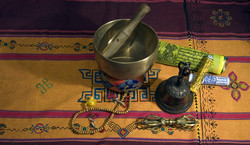How gender affects Tibetan medicine
Tibetan medicine has grown in popularity in recent decades even though it has been around for at least 800 years. Not only that, but since the 1980s there has been an increase in Tibetan women practitioners. They are known as amchi and are found in Tibetan areas of China, the Tibetan exile community in India, and in Mongolia and Nepal. There is a huge problem of health risks and complications related to childbirth in Tibetan areas. International and governmental efforts to alleviate this have fallen short. This is the focus the TIBETANMEDICA (Women practitioners of Tibetan medicine and the modernisation of health care) project delved into. Previous literature has shown that the reasons for such health problems are related to low socioeconomic status and formal education of rural Tibetan women as well as limited health care facilities and access. In light of such limitations, research aimed to document and analyse the life stories and medical work of female amchi in contemporary Tibetan medical practice. This is within the context of modernisation. The work has also studied and analysed the effect of amchi's gender on patients and overall community health. More specifically, it looked at how a rise in female practitioners could foster women's maternal and child health. Results show that the range and depth of practical application of textual and practical knowledge and clinical work varies considerably according to gender and generation. It was also found that there are instances of practitioners and specialised hospital departments in urban areas that have begun to incorporate western (bio)medical knowledge and practice with Tibetan medical approaches. Whether or not more specialised knowledge of Tibetan medical gynaecology and paediatrics should be promoted is part of an ongoing debate among medical doctors and administration. Detailed discussion and analyses of the results and findings have been published. Included in these publications are the topics of transmissions and practices of Tibetan medicine along with the representation of women. Outcomes have the potential to provide a foundation for academic, political or medical involvement relating to Tibetan medicine as well as with health care and community medicine.



